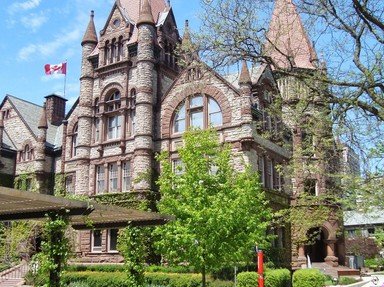Quiz Answer Key and Fun Facts
1. In order for a town to be classified as a ghost town, the population of the town must be zero?
2. What ghost town, founded in the 1800's, was named after the English admiral who was court-marshalled and eventually executed for cowardice in 1757?
3. In the 1930's, according to many tales, this town became notorious for housing mobster Al Capone in a log cabin near Quadeville?
4. During the 1870's, many Germans arrived in Ontario to try and successfully farm to support their families. Which of the following towns, occupied mainly by Germans, fatefully became a ghost town in the late 1950's?
5. In 1904, a hydro plant was built to supply power to Inco. During the 1950's a school and store were added. By 1981, not a single building remained. What hydro town suffered this unusual path from boom to bust?
6. What ghost town was located on Confederation Lake in Northwestern Ontario and was a successful mining community?
7. Ontario is quite unique as it has three ghost towns each with the same name. At one of these locations, the community became a ghost town after the Canadian military took the land and used it as a military base. What town is this?
8. During the midst of World War II, the British were in desperate need to train thousands of flyers. Aerodrome space was sparse in Britain and as a result, the Brits looked to Canada for help. A bombing and gunnery school was built in 1940 at this location?
9. Railway companies often built satellite communities, borrowed the nearby town's names, and then added this word to the end to maintain recognition and ties to the town?
10. During the early 20th Century, many industries relied on the use of the railway to be successful. Such was the case with Canada Canning Company. In 1904, Canada Canning Company established a factory at which Ontario location that has now merged with its present community?
11. What Northern Ontario community housed up to as many as 1500 residents and was the most extensive community ever built by the Ontario Hydro Electric Power Commission?
12. During the 1880's, a Canadian Pacific Railway town was established and was also known as "Bisco". The town was a raucous community with many brothels and saloons. What ghost town is this?
13. The Staniforth Lumber Co. built a mill and a community was established along the border of Algonquin Park. In 1973, the mill burned down and by the late 1990's, the Canadian government ordered all remaining residents to evacuate. What community was this?
14. All has vanished in this small hamlet that was located in the Parry Sound District except a cemetery that tells the story of a community plagued by a high child mortality rate. What ghost village is this?
15. Along the shores of Lake Superior at Imogene Cove, a logging community of over 400 inhabitants and consisting of over 20 buildings, including a doctor's office named Pukaskwa Depot once existed?
Source: Author
apathy100
This quiz was reviewed by FunTrivia editor
minch before going online.
Any errors found in FunTrivia content are routinely corrected through our feedback system.

